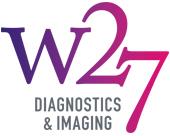If you are having radiology tests and treatments, you might be wondering how you will feel afterwards and whether you will be able to resume your everyday activities straight away.
Your radiologist will explain the treatment to you in detail at the time, including any aftercare, but in the meantime, here is our quick at-a-glance guide.
X-ray
X-rays may be used to diagnose fractures and dislocations as well as conditions like arthritis. You will be free to go immediately after your X-ray and should not need to take any special measures to care for yourself afterwards. Your X-rays will normally be sent to your referring doctor, along with the radiologist’s report, within a few days.

Ultrasound
Ultrasound scans do not use radiation unlike X-rays. They are a safe and painless way to diagnose a wide range of conditions including tendon inflammation, bursitis and ligament sprains or tears. If you have had a simple ultrasound scan, you should be able to return to your normal activities immediately.
If you have had an ultrasound guided injection, however, local anaesthetic will have been administered and it is advisable to avoid driving or operating heavy machinery for the remainder of the day.
Ultrasound-guided injections include:
- Corticosteroid injections, which are injections into the joints and soft tissues around the joints. They are used to reduce the pain of arthritis or inflammation.
- Dry needling, which involves repeatedly injecting an abnormal tendon using ultrasound to guide the needle. This creates mild trauma and localised bleeding which helps promote cellular regeneration and healing of the tendon.
- Hyaluronic acid injections, which are used to help lubricate joints and provide temporary pain relief for conditions like arthritis.
CT scans
CT scans are used to create 3D images of the inside of your body. They may be used to diagnose bone and joint problems and monitor conditions such as tumours. In some hip replacement surgery, they are used to help develop a custom implant.
If you are having a CT scan for musculoskeletal problems, dye may be injected into your joint to allow the radiologist to see what is going on inside or it may be injected into a vein to allow them to get a better look at internal body structures. You will not be able to drive immediately after such a procedure.
MRI scan
MRI scans are used to create detailed images of the inside of your body. Some people undergoing an MRI scan may be given a sedative to help them to relax. If this is the case, you will not be able to drive until the effects of the sedative have worn off. You will normally receive the results of your scan within a few days.

Diagnostic arthrogram injections
These are used to help your doctor pinpoint the cause of joint pain. The procedure involves injecting contrast dye into the painful joint using ultrasound or X-ray to guide the needle. The dye shows up the structures of the joint, including cartilage, ligaments, tendons, bones and joint linings.
You will normally be able to go home around an hour after the procedure. However, you should make arrangements for someone to drive you as it is not advisable to drive afterwards. There may be some pain and discomfort for a few hours after the injection but this should gradually subside.
Platelet Rich Plasma injections
These are used to accelerate healing following a tendon injury. The idea is that injecting PRP, taken from your own body, into damaged tissues helps to stimulate new healthy cells to grow, promoting healing. You will normally be able to go home within a few minutes of having the procedure.
You might experience a worsening of pain in the injected area for a few days afterwards and it is advisable to rest. You can take painkillers but should avoid anti-inflammatories for 10-14 days.
PRP injections can take a few weeks or even months to produce results but healing in the area will normally be faster than if you had not had the injection.
Hydrodilatation for Frozen Shoulder
This is a therapeutic injection that involves injecting a mixture of steroid, local anaesthetic and saline into the frozen shoulder. It stretches the capsule of the joint and treats the inflammation which helps to relieve pain and improve the range of movement in the shoulder.
Afterwards you are likely to experience moderate discomfort for around half an hour. Once this settles down you will be able to go home, but you should not drive until the effects of the anaesthetic have worn off.
You will be given exercises to do to maximise the effectiveness of the treatment. If you are diabetic you will need to monitor your blood sugar levels for 48 hours after the procedure.
Whatever diagnostic test or treatment you have it is important to follow the aftercare instructions carefully. They are there to keep you safe and to maximise the effectiveness of any treatment. If you are in any doubt or have questions about these procedures, contact us and we will be happy to help.
MUSCULOSKELETAL TREATMENT | MANCHESTER, WIGAN, CHESHIRE + MORE
W27 provides fast, accurate diagnosis and treatment of musculoskeletal symptoms and conditions using the latest state-of-the-art imaging facilities.
For your appointment there is a choice of locations:
The John Charnley Wing, Wrightington Hospital – Hall Lane, Appley Bridge, Wigan, WN6 9EP
HCA Manchester Institute of Health & Performance – 299 Alan Turing Way, Manchester, M11 3BS
Euxton Hall Hospital – Wigan Road, Euxton, Chorley, PR7 6DY
The Spire Manchester – 170 Barlow Moor Road, Didsbury, Manchester, M20 2AF
European Scanning Centre – 10-11 Bulstrode Place, London W1U 2HX
The OrthTeam Centre Ohm Building – 168 Barlow Moor Road, Manchester, M20 2AF
Information about our Fees can be found here.
If you have any questions or would like to discuss your options with a specialist, please contact the team to book an initial consultation.














